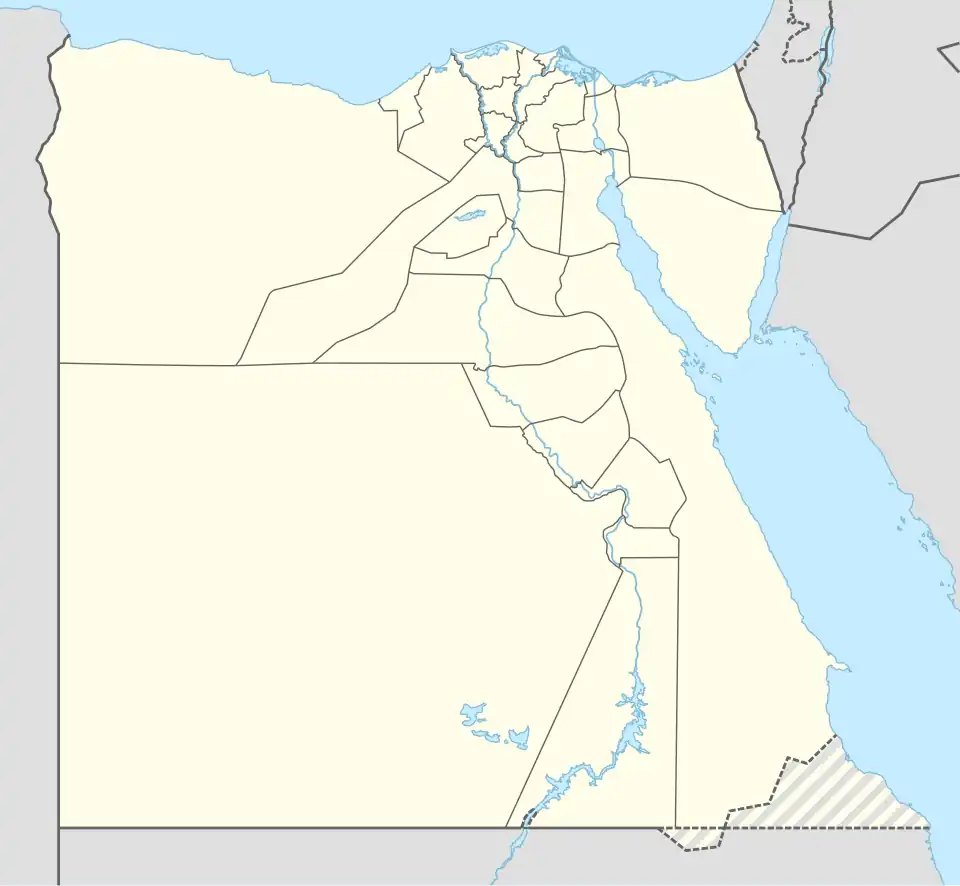Abnub
Abnub
ⲡⲛⲟⲩⲃ | |
|---|---|
 Abnub Location in Egypt | |
| Coordinates: 27°16′N 31°09′E / 27.267°N 31.150°E | |
| Country | |
| Governorate | Asyut Governorate |
| Area | |
• Total | 16.0 km2 (6.2 sq mi) |
| Elevation | 57 m (187 ft) |
| Population (2023)[1] | |
• Total | 118,843 |
| • Density | 7,400/km2 (19,000/sq mi) |
| Demonym(s) | Abnubi (Male, Arabic: أبنوبي) Abnubiyah (Female, Arabic: أبنوبية) |
| Time zone | UTC+2 (EET) |
| • Summer (DST) | UTC+3 (EEST) |
Abnub (Arabic: أبنوب, from Coptic: *ⲡⲛⲟⲩⲃ[2]) is a city in Egypt. It is located on the east bank of the Nile, in the Asyut Governorate, several kilometres northwest of Asyut. As of the 2023 census, the population was 118,843.[1] The city's name ultimately comes from Ancient Egyptian: pr-nbw, lit. 'treasury'.[3]
Notable people
Abnub is the birthplace of Pope Shenouda III of Alexandria, the Pope of the Coptic Orthodox Church from 1971 to 2012.[4]
A church in Abnub bears the name of Phoibammon of Preht, a 4th century martyr.[5]
References
- ^ a b c d "Egypt: Governorates, Major Cities & Towns - Population Statistics, Maps, Charts, Weather and Web Information". www.citypopulation.de. Retrieved 9 August 2025.
- ^ Clackson, S.J. Coptic documents relating to the monasteries of Apa Apollo at Bawit and Titkooh in the Hermopolite nome. University of London. p. 58.
- ^ Peust, Carsten. "Die Toponyme vorarabischen Ursprungs im modernen Ägypten" (PDF). p. 10.
- ^ Samir, Samir Khalil (March 20, 2012). "Coptic Christians after Shenouda". Asia News. Retrieved 17 June 2017.
- ^ Timm, Stefan (1979). Christliche Statten in Agypten. p. 154.